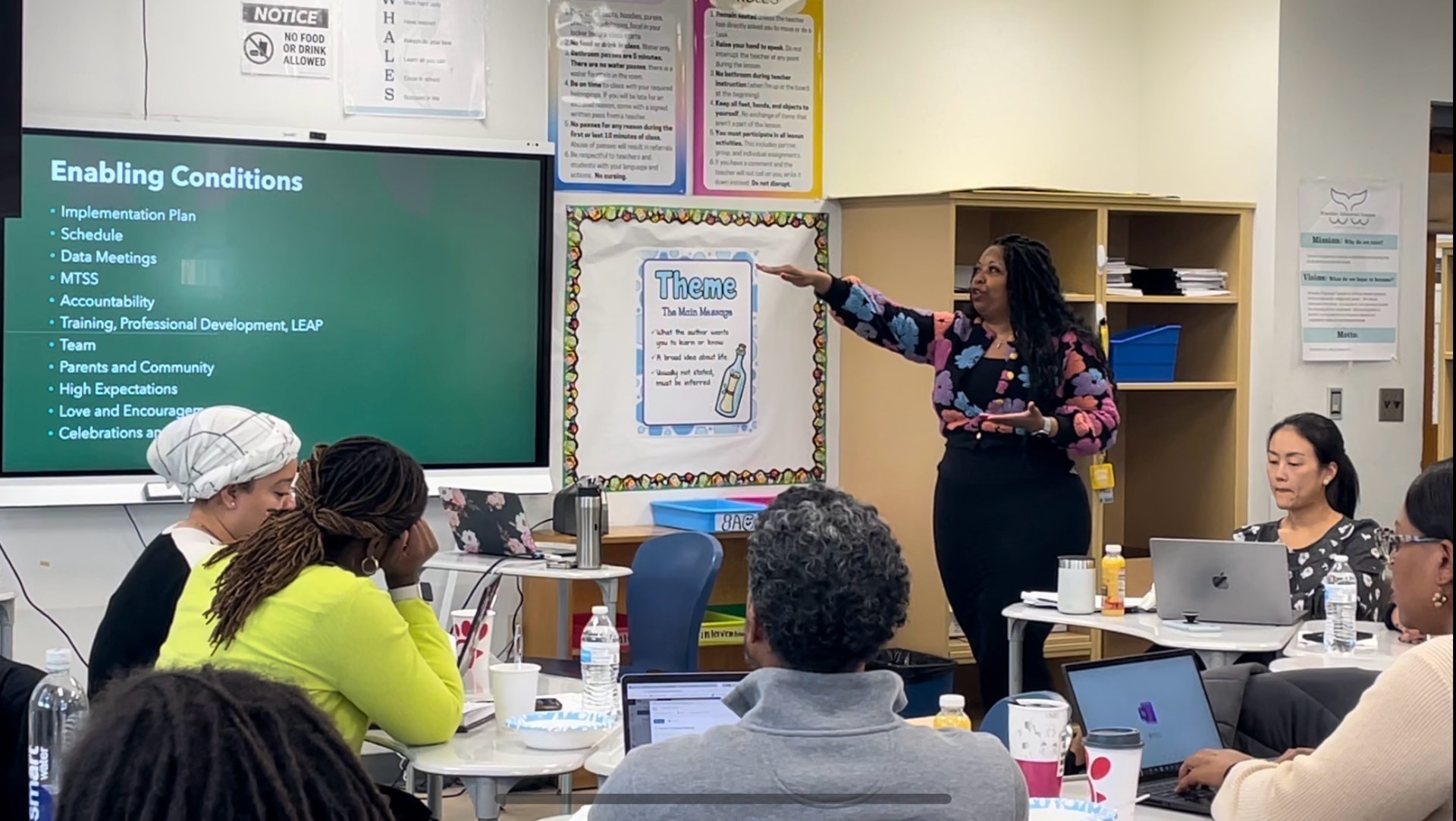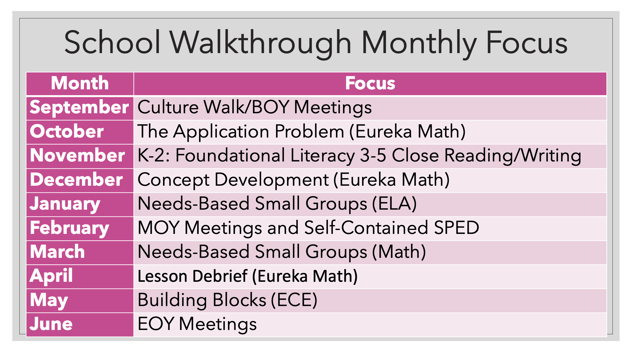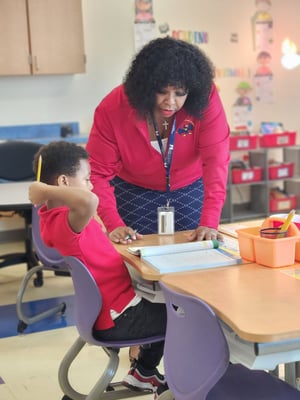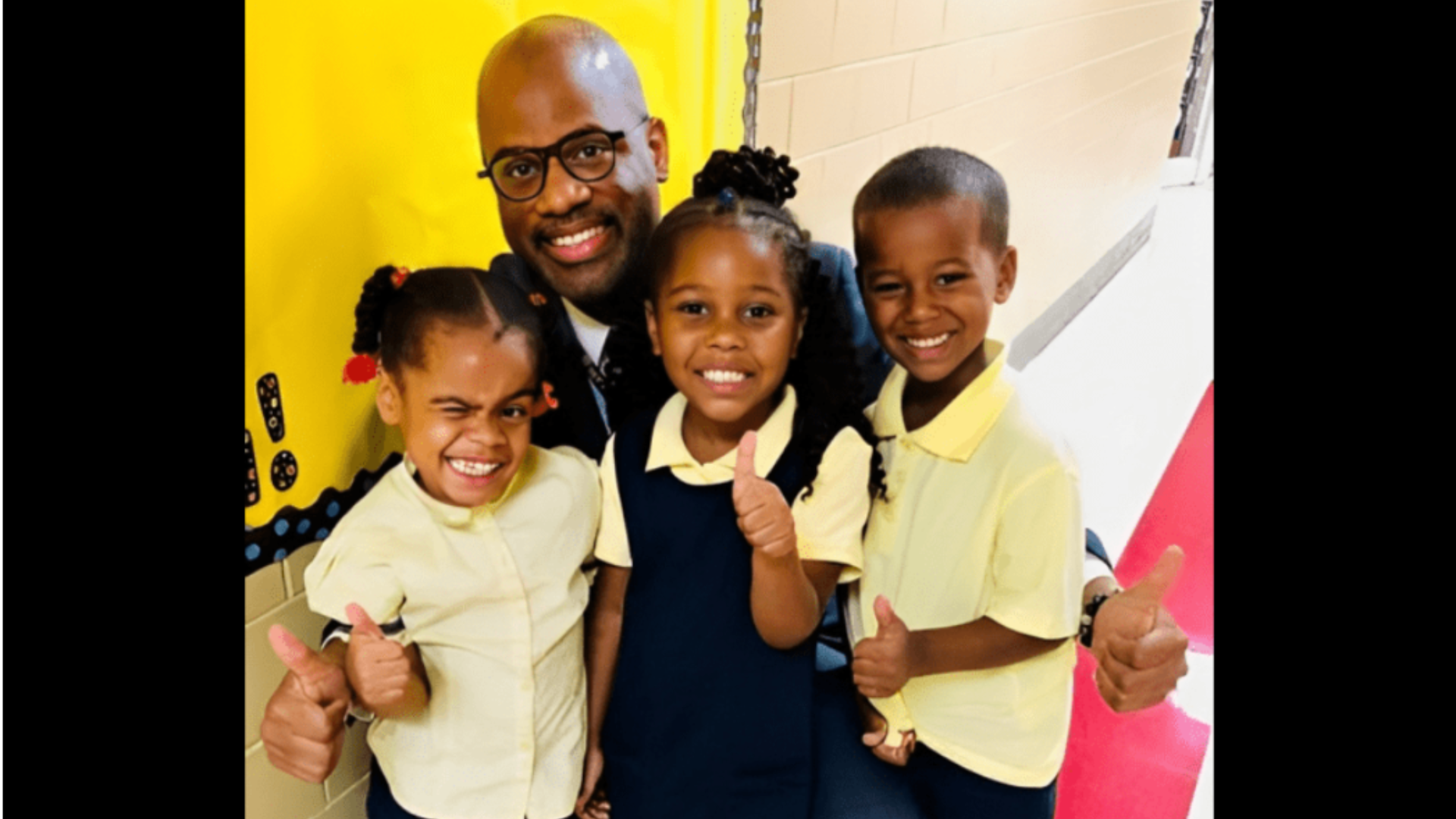How One Instructional Leader Makes Classroom Walk Throughs Meaningful
For over 10 years, Relay Graduate School of Education has trained over 9,000 leaders on skills like teacher coaching and strategic planning. We offer 4 powerful leadership academies where principals and principal supervisors grow new skills alongside peers and experienced mentors. Seats are available for our 2024-25 programs but fill up fast. Learn more >>
This profile is part of the Follow the Leaders project, an ongoing series from Relay Graduate School of Education to share insights and inspiration on leading for equity, wellness, and achievement. Subscribe here.
Tenia Pritchard knows the District of Columbia Public Schools (DCPS) like the back of her hand.
A graduate of a DCPS high school, she returned to the district and gradually took on more leadership as a teacher, dean of students, assistant principal and then principal at two DCPS schools. As a school leader, she saw dramatic improvement in student achievement gains.
After being named 2018 DCPS Principal of the Year and the 2018 Washington Post Principal of the Year finalist, in 2021 Pritchard stepped up into the role of instructional superintendent of Cluster 3, comprising 13 schools from across the district. She was determined to bring all she had learned about school leadership to support her 13 principals.
In getting to know her schools, Pritchard soon noticed wide variability in how building leaders and coaches were providing feedback to teachers, especially in English Language Arts (ELA). She sensed that schools could make more progress if their instructional feedback was more focused—and if her schools could lean on the power of their cluster community to get even better.
The question was what would get them there?
Focus Walks: A Targeted Classroom Walkthrough Strategy
In 2018, Pritchard was part of a cohort of principals who received coaching and other professional development through Relay Graduate School of Education’s Instructional Leadership Professional Development Program. She continued to receive coaching through 2022-23 and was also selected for the Leverage Leadership Institute, a program which only admits principals with a record of student success.
Throughout all of these experiences, she became familiar with the power of the “focus walk” — monthly instructional walkthroughs for school leaders and coaches to gather data on teacher instruction and plan supports to help teachers improve. She implemented focus walks with her cluster in 2022-23 and is continuing them this year.
In a short period of time, schools in her cluster have seen impressive gains. In 2022-23, eight of the cluster’s 13 schools had above average growth in ELA; four also had above average growth in math.
For two years running, Cluster 3 has also been home to three of just five DCPS elementary schools named Bold Performance schools by Empower K12, which highlights schools that are moving the needle more than average, especially for priority student groups such as students with disabilities and students of color.
“Sometimes principals don’t get the coaching that they need,” Pritchard says of the focus walks. “I use this opportunity to model what they should do with their own teams when I’m not there.”

Dr. Tenia Pritchard leading a meeting with her school leaders
The Foundation of Classroom Walkthroughs: Strong Relationships
As an instructional superintendent, Pritchard has focused on fostering her school leadership teams’ capacity to provide actionable, real-time feedback. One of Pritchard’s maxims, in fact, is “Feedback is love.”
Pritchard recognized that the foundation of effective feedback is building authentic relationships. To that end, she committed to being in the cluster’s schools for the majority of her time — and using that time to model effective coaching and feedback for their leaders.
“We say you’re going to have people in your classroom all the time, but a lot of the schools I work with weren’t used to seeing an instructional superintendent in the classroom,” she says.
Pritchard adapted the school walkthrough model she learned from Relay to create a protocol for focus walks specific to her community and team. Every month, Pritchard leads half-day visits, which include each school’s principal, AP, coaches, and the cluster’s content lead for math or ELA in a supporting role.
We want this process to be school centered. We’re modeling for them some of the things they should do as a team together.

Dr. Tenia Pritchard
Elementary Instructional Superintendent
Here’s how Pritchard uses the focus walks to align instructional leaders across her cluster of schools:
1. A narrow monthly focus.

Cluster 3's focus areas mapped to the year
Each month, the focus walks zoom in on just one element of school culture or instruction, which will be informed by data that points to specific gaps in curriculum or practices.
In order to narrow focus, Pritchard has developed a scope of focus walks (illustrated above) with October’s focus walk devoted to the “application problem” portion of each Eureka Math lesson. “Application problems” are modules focused on making core mathematical concepts more concrete.
Every month, at every school, we do a deep dive, and instead of looking at something in one school, we look at it in 13 schools.

Dr. Tenia Pritchard
Elementary Instructional Superintendent
With this in mind, Pritchard works with her coaches and content specialists to identify specific “look-fors” for each month’s focus walk.
For the focus on application problems, Pritchard used data and her own observations from the previous year’s walkthroughs to spotlight how teachers address student misperceptions, as well as how teachers encourage students to talk through their thinking and approach the problem in different ways through classroom discourse.
At each school, the principal and instructional coach then work to build an observation schedule to make sure the walkthrough covers the same area of focus in every classroom, staggering schedules as needed.
“In a traditional walkthrough, we might see one person’s math block and another person’s ELA block — you can’t get data like that,” Pritchard explains. “If we’re only focusing on the application problem, I want to see every teacher deliver instruction around the application problem.” Pritchard likes this approach to an action research project.
2. Walking the entire school.
On the day of the walkthrough, the team convenes to discuss the anticipated lessons, collected data, and how the focus area is reflected in the school’s overall goals, strategies, and professional development. They then review the targeted look-fors for the specific focus area in preparation for visiting classrooms.
Over a 90-minute period, the walkthrough team visits every classroom where the focus area is being taught; depending on the size of the school the team may spend 10 to 15 minutes in each classroom.
The goal is to get a snapshot of how the same lesson — or portion of a lesson — is being taught in each classroom across all grade levels. Each team member takes notes using an observation tool customized for each monthly focus walk, recording “glows and grows” in the areas identified earlier
They don’t discuss their observations until after all classrooms have been visited and the team returns to a conference room to debrief.

3. Triangulating observations and data for an action plan.
During the debrief, the walkthrough team discusses their observations, ending with the school’s principal sharing overall “glows“ — examples of successful practices observed in every classroom.
Team members then use their observations and the data to identify gaps and narrow them to the one with the greatest potential to move the needle on student performance through action planning. “We triangulate what we know student achievement data is saying with the qualitative factors by observing what teachers are doing,” Pritchard says.
The walkthrough team then follows an action planning protocol based on the Get Better Faster framework, focusing on clear, measurable, and actionable steps teachers can take to improve right away.
Says Pritchard, “Before I leave, I want to know who, what, by when, who’s responsible, and if it’s addressed with professional development on what day they’re going to have it, and when we will follow up.”
Connecting Practice — and Leaders — to Each Other
While the monthly focus walks provide principals and other instructional leaders with a model for observations, feedback, and action planning, they represent only one component of the support she provides her school leaders. “We’ve provided a monthly model so we can do a deep dive, but then there are other supports,” she says.
Those supports include leadership professional development by both Pritchard and Relay, professional learning communities for principals, coaches, and the cluster’s content leads, and 1:1 coaching, which Pritchard models after the support she has received as an instructional leader.
Jallon Brown-Croskey was Pritchard’s Relay coach in 2021-22. She notes that the ecosystem of leadership support provided by DCPS and Relay was itself a model in Pritchard’s development as a leader.
“For several years, Tenia was part of a cohort of leaders that participated in regular coaching, intersessions, and summer intensives,” says Brown-Croskey, who is now a Partner on Relay’s regional leadership programs team. “Her experiences with Relay’s instructional leadership levers began long before she took on the role of instructional superintendent, and because of that, she has been able to coach and support her leaders and is creating the environment and structures for her principals to be able to use those levers as well.”
Building on her cluster’s impressive gains in ELA, Pritchard is now focusing extensively on developing her principals’ feedback on Eureka Math to support the district’s strategic goal for the 2023-24 school year.
Along with her cluster team, she is also modeling these techniques for DCPS leadership, conducting focus walks with other instructional superintendents across the district to help them, in turn, provide additional support to their own school leaders.
“One of the things I work hard as a leader to impart is not to think of ourselves as individual schools, but a cluster of schools that are here to support each other,” Pritchard says. “We often work in silos, and if we can share these practices, we can be stronger together.”
Taking it Back to Your School
- What are the highest priority grades and/or subjects to focus on this year?
- What is working about your current approach to leading walkthroughs? How might they better align to your high priority focus area?
- How might district/network experts model key leadership practices across schools? What would be the benefit of doing so?
Artifacts
About the Author
Dr. Tenia Pritchard has been employed with DC Public Schools for 24 years. She served as a teacher, dean of students, assistant principal, and then principal at Whittier Education Campus, as well as principal at Excel Academy, DCPS’ first all-girls school. She has also served as professional development facilitator for educators, an Executive Board member of the Washington Teachers Union, and the resident mentor principal.
Dr. Pritchard was the winner of the Rubenstein Award for Highly Effective School Leaders and the 2018 DC Public Schools Principal of the Year, and was named a finalist for the 2018 Washington Post Principal of the Year award. She now serves as an Elementary Instructional Superintendent for Cluster 3 in DCPS. She is an alumna of several Relay programs, including Inclusive Schools Leadership Institute and Leverage Leadership Institute, and has worked with Relay coaches through a DCPS- Relay partnership since 2018.
Share this
You May Also Like
These Related Stories

Go Slow to Go Fast: Change Through Focus

Making the “Science of Reading” Real in Classrooms: Lessons for Leaders



